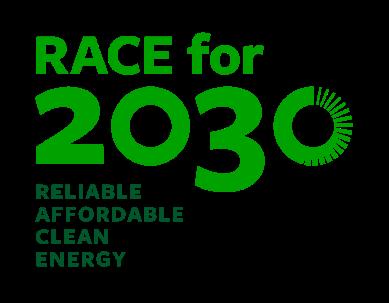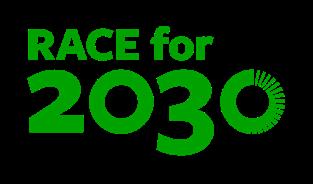BT1: Research Report 24/7 TRUZERO
Tracking Renewables Utilisation for Zero
Emission Reporting and Operation
Final report
RACE for Business
Research theme BT1: Digitalising industry
ISBN: 978-1-922746-58-0
24/7 TRUZERO Tracking Renewables Utilisation for Zero Emission Reporting and Operation
Citation
Samarakoon, S., Kallmier, E., McConnell, D., Roberts, M., MacGill, I and Bruce, A. (2024). 24/7 TRUZERO: Tracking Renewables Utilisation for Zero Emission Reporting and Operation for RACE for 2030
July 2024
Project team
Collaboration on Energy and Environmental Markets, University of New South Wales (UNSW)
• Anna Bruce
• Shanil Samarakoon
• Mike Roberts
• Dylan McConnell
• Ellie Kallmier
• Iain MacGill
• Maria Balatbat
Curtin University
An adjacent case study was undertaken with Plico/Starling Energy by Curtin University (Sumedha Rajakaruna, Ehsan Pashajavid, Shuying Lai, Mike Mouritz and Angie Silva) as part of this project, which does not form part of this report, but contributed to our thinking on 24/7
Acknowledgements
The research team would like to thank the stakeholder reference group participants from the following organisations: AG, DCCEEW, Business Renewables Centre Australia, CEC, Coles, EPWA, Google, Green Energy Markets, Horizon Power, Renewable Energy Hub, and UTS. We would like to acknowledge contributions to open-source tools development by George Furrer, Declan Heim, Shayan Naderi and Nick Gorman from the Collaboration on Energy and Environmental Markets, and time generously given by the research participants.
Project partners
Acknowledgement of Country
The authors of this report would like to respectfully acknowledge the Traditional Owners of the ancestral lands throughout Australia and their connection to land, sea and community. We recognise their continuing connection to the land, waters and culture and pay our respects to them, their cultures and to their Elders past, present, and emerging.
What is RACE for 2030?
RACE for 2030 CRC is a 10-year co-operative research centre with AUD350 million of resources to fund research towards a reliable, affordable, and clean energy future. https://www.racefor2030.com.au
Disclaimer
The authors have used all due care and skill to ensure the material is accurate as at the date of this report. The authors do not accept any responsibility for any loss that may arise by anyone relying upon its contents.
Report at a glance
What is in the report?
This project report explores the opportunities and challenges of matching and tracking renewable energy purchasing by commercial and industrial (C&I) customers in the Australian context. Enosi’s Powertracer platform demonstrated renewables matching and tracking in a power purchase agreement (PPA) for several case studies, and three parallel research streams were undertaken:
1. Stakeholder engagement was undertaken to understand Corporate Renewable Energy Procurement and the role of time matching and certification, including the key corporate drivers and barriers.
2. Tools were developed for improving matching of renewables purchasing of large energy users with their demand through different procurement and on-site flexibility approaches, and for analysing the cost, emissions and risk outcomes. Using these tools and data from the case studies and project partners, potential renewables products and contracting approaches were assessed for a range of different C&I customer types.
3. A model was built to explore capacity investment in a future National Electricity Market (NEM) with high uptake of ‘24/7’ contracting.
Why is it important?
• Driven by limitations of current carbon accounting and certification approaches, there is increasing interest in time-matching within corporate renewable energy PPAs and certification.
• Businesses and coalitions aiming to provide leadership in renewable energy procurement are going beyond net 100% targets and committing to renewable energy matched every hour with demand (‘24/7 Carbon Free Energy’ (CFE)).
• Standards are under development globally, and under the REGO framework in Australia, to include granular (usually hourly) timestamping in certification of ‘green’ products and renewable energy.
• However, as yet, there is no established mechanism to validate renewable generation matched with demand hour by hour, and there is very limited experience of PPA contracts requiring time-matching.
• In general, businesses currently lack visibility on how their renewable energy purchasing decisions, related firming contracts and onsite energy management impact their energy costs and risks and especially the carbon-intensity of their electricity use.
What did we do?
1. Stakeholder interviews and analysis of submissions to the Renewable Energy Guarantee of Origin (REGO) policy consultation were undertaken to better understand the motivations for and dynamics of renewable energy procurement decisions by C&I customers in Australia, and specifically their views on 24/7 procurement arrangements and certification and the opportunities and challenges they present.
2. Modelling of 51 different C&I loads under 8 PPA structures to assess matching, emissions and financial outcomes was undertaken, then linear optimisation was used to create optimal hybrid portfolios for each scenario, and to perform load flexibility and behind-the-meter battery functionality
3. The electricity system-level impacts of 24/7 carbon-free energy procurement (24/7 CFE) on the Australian power system were analysed, and then capacity expansion modelling was used to analyse the impact
different CFE procurement goals by Commercial and Industrial loads. The impacts on costs, emissions and generation mix were analysed.
What difference will it make?
Enosi’s Powertracer platform has demonstrated renewables matching and tracking in a PPA for several case studies. This project has provided insights on the opportunities and challenges for increasing time-matching and certification in renewable energy procurement in the Australian context. Key arguments in support of time-matching included potential to facilitate targeted investment in green firming, storage and demand management, differentiation from uncertified 100% renewable claims, and alignment with emerging green product certification requirements; while barriers included limited interest where existing PPAs are in place, uncertainty about renewable energy certificate markets and the role of voluntary procurement in a changing policy environment, additional contract complexity and lack of senior management awareness.
In terms of customer outcomes, the project found that 24/7 PPAs result in better matching and emissions outcomes than other PPA structures, but likely at significant additional cost compared to simple pay-as-produced contracts. Other more sophisticated PPA types can offer some of the emissions and hedging benefits, but portfolio optimisation has a significant positive impact regardless of PPA type, and additional demand management improved time-matching and emissions reductions.
In terms of the potential impact of time-matched PPAs on investment in the NEM, achieving 90-95% 24/7 CFE goals incurs a relatively modest cost premium, higher CFE percentages are achievable but come with increasing cost premiums as they approach 100% and increasing the CFE percentage for C&I customers raises the required storage capacity and technology mix in the portfolio. However, the interaction of voluntary procurement with recent policy commitments such as the Capacity Investment Scheme, and hence its role in driving additional renewable energy or firming capacity is uncertain and not fully explored in the modelling.
What next?
C&I customers and stakeholders in Australia generally have limited understanding or motivation for more complex PPA structures, including 24/7 CFE. There is a need for a better understanding of the diversity of C&I customer renewable energy procurement strategies and certification requirements across different specific sectors.
In particular, the characteristics and value of flexibility in C&I customer demand, how this fits into their procurement and carbon strategies, and associated grid impacts. The electrification of new large industrial loads, which may be exposed to temporal certification in international markets, is not well understood. The impact of 24/7 on emissions under ‘hydrogen superpower’ and massive datacentre growth scenarios is an important research area, as these potential large load may have significant emissions impact.
Open-source tools developed through this project are available be used and further developed by a range of stakeholders to explore the impact of time matching in PPAs, and at the system level, and extended to related research areas.















